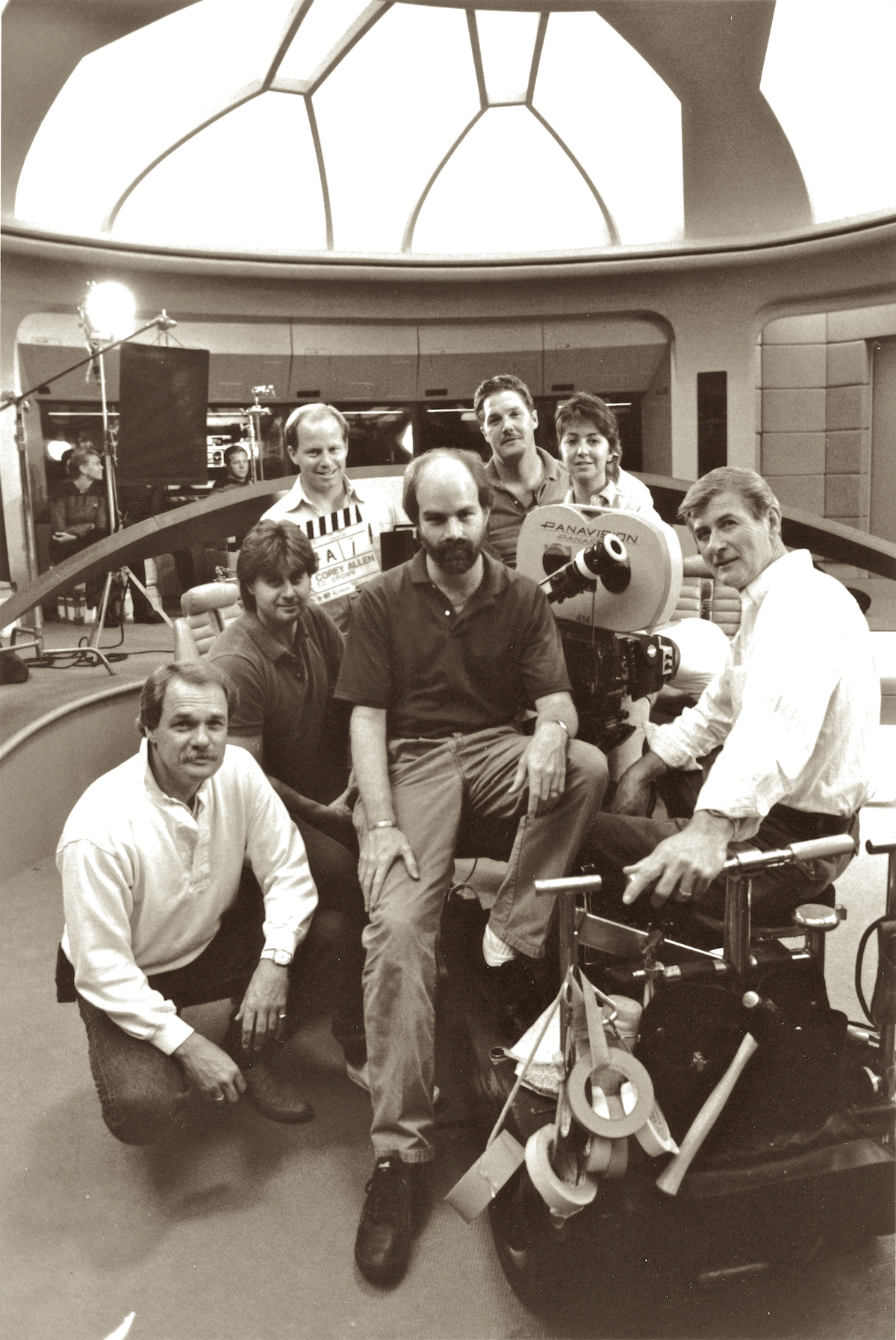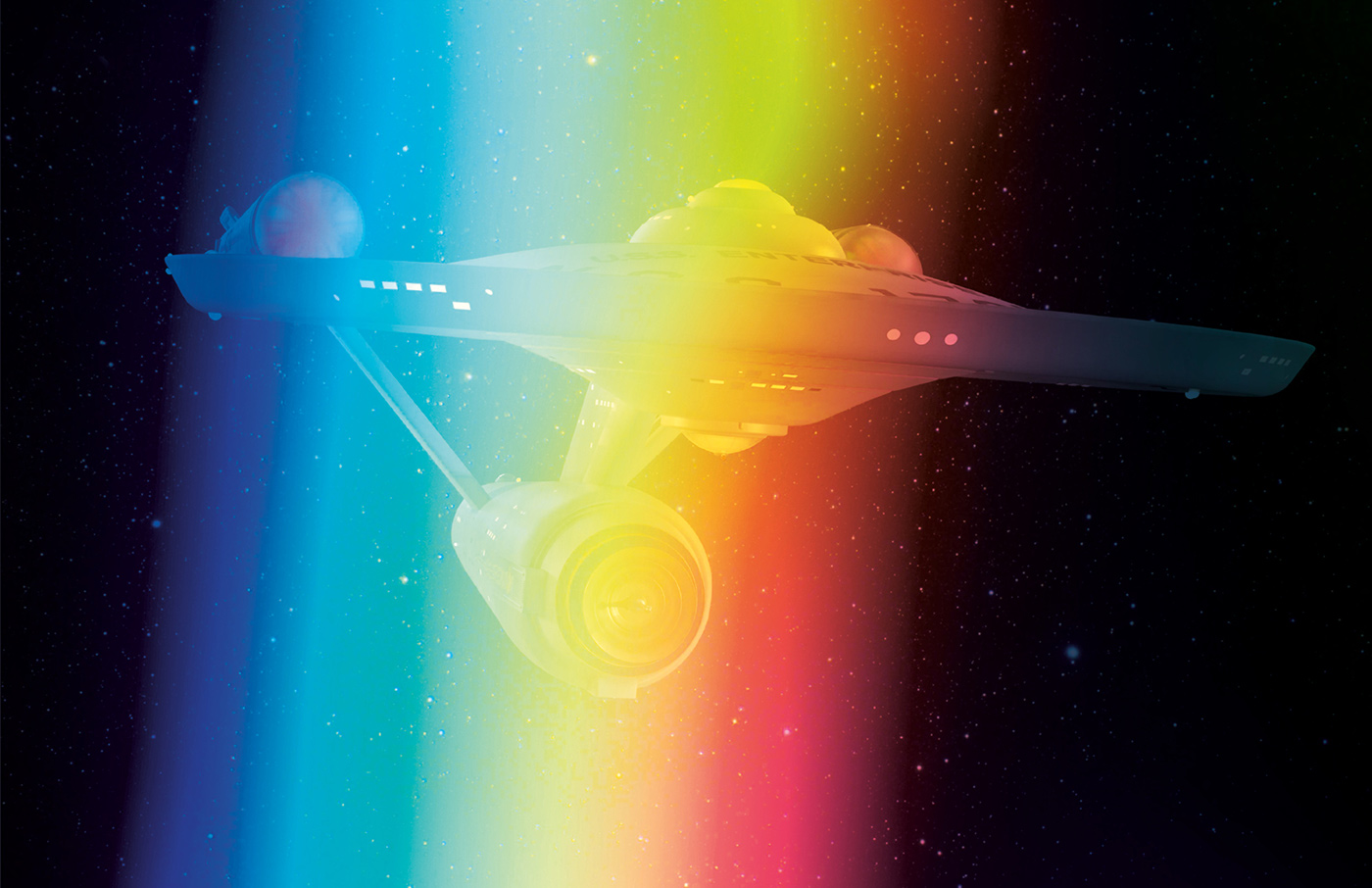A half-century has passed since the starship Enterprise launched a technological revolution in series TV that’s continued with each new addition to the franchise.
by Pauline Rogers / Photos Courtesy of CBS Star Trek Archive / CBS Interactive
On September 8, 1969, Gene Roddenberry began to take television audiences “where no man has gone before” with the first episode of Star Trek. Who knew his mission to use future environments to explore current problems would spawn eight television “reboots” and 13 feature films? Who knew a TV series would be cited as an inspiration by Apple computer co-founder Steve Wozniak, jet-propulsion scientists, and even those working to pioneer non-invasive imaging technology?
Star Trek’s visual origin story begins with its first Director of Photography, Gerry Finnerman, ASC, and industry VFX legends like Howard Anderson, ASC (miniatures, traveling and materialization effects); Linwood Dunn, ASC (optical printers, traveling mattes); and Joseph Westheimer, ASC (special photographic effects); who all helped ready the Enterprise for its first mission. It culminates (at least for now) via the use of two million-plus LED lights, used on CBS All Access’ digitally platformed Star Trek: Discovery. One can only imagine the challenges of realistically portraying the USS Enterprise’s maiden voyage with older film cameras and lenses – Arriflex, Bausch & Lomb, and Mitchell systems shooting 35mm Eastman 50T 5291 and 100T 5254. That is some very big and bulky gear employed on (no doubt) very hot sets.
By the time Star Trek: The Next Generation began airing in September 1987 (one of the highest budgeted single-camera shows of its time at $1.2 million per episode), technology had dynamically evolved. The series was still shot on 35mm Eastman 400T 5294, 5295, and EXR 500T 5296, but with Panavision cameras and lenses.
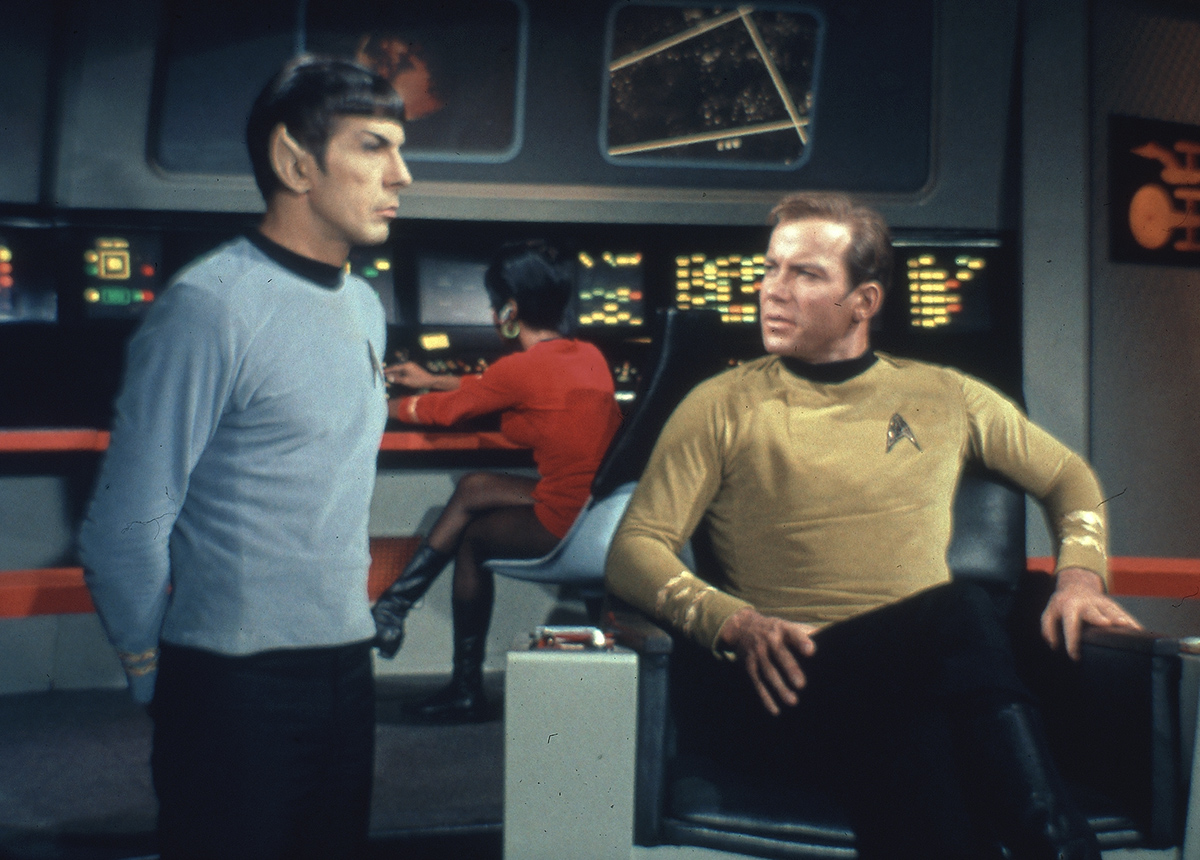
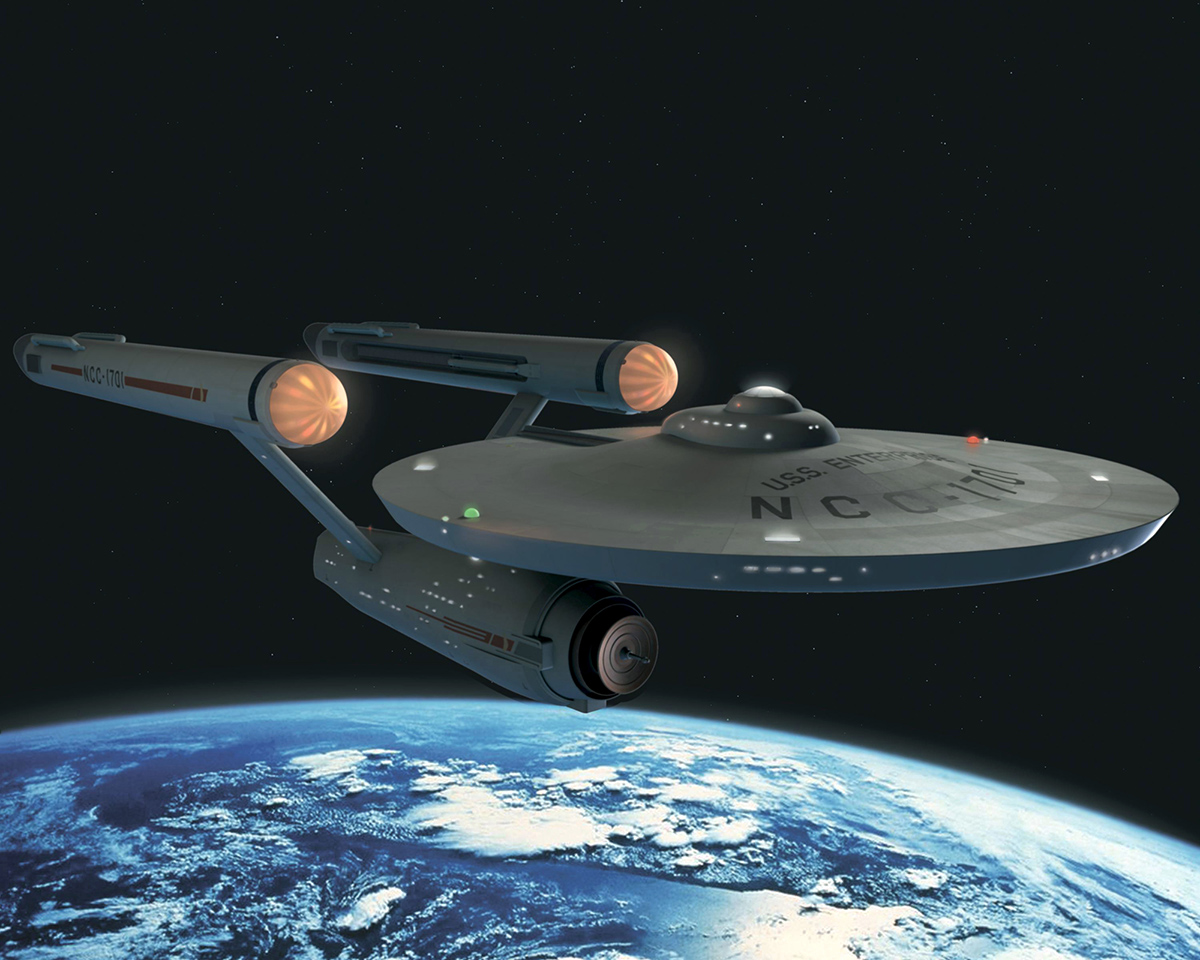
“I remember walking into the pilot [as a Local 600 trainee] to work with [Director of Photography] Ed Brown [ASC] and his team, and literally having my life changed,” recalls AC Maricella Ramirez. Brown shot the pilot and first two seasons for Next Generation, and when Ramirez returned later on, Next Generation’s Director of Photography, Marvin Rush, ASC, moved her up to 1st AC. “The shots designed by Marvin, and executed by Operator Joe Chess [SOC], were very complex,” Ramirez adds. “We were doing masters with very complicated dolly moves, many dance floors, long lenses, sometimes zooming at the same time on the old Panavision 5:1. When we did zooms, they couldn’t look like we were zooming. I was never able to ride the dolly because Joe had to ‘pretzel’ himself into uncomfortable positions. The Steadicam, which was considered highly specialized at the time, was used only for a specific exterior or an occasional interior.”
Instead of handheld on the walk-and-talks, Ramirez adds, “we used a vibration isolator that the Panahead would sit on top of. It isolated the vibrations of the camera, but the stops were hard to handle. We had to have a fourth person, walking with the three of us, and very gingerly lock-off the isolator so the end of the shot didn’t look like Jell-O, bouncing back and forth.”
There was no remote focus, and the grips were challenged pulling the heavy Hustler dolly on the carpet. “It looked simple, but it was not,” Ramirez shares.
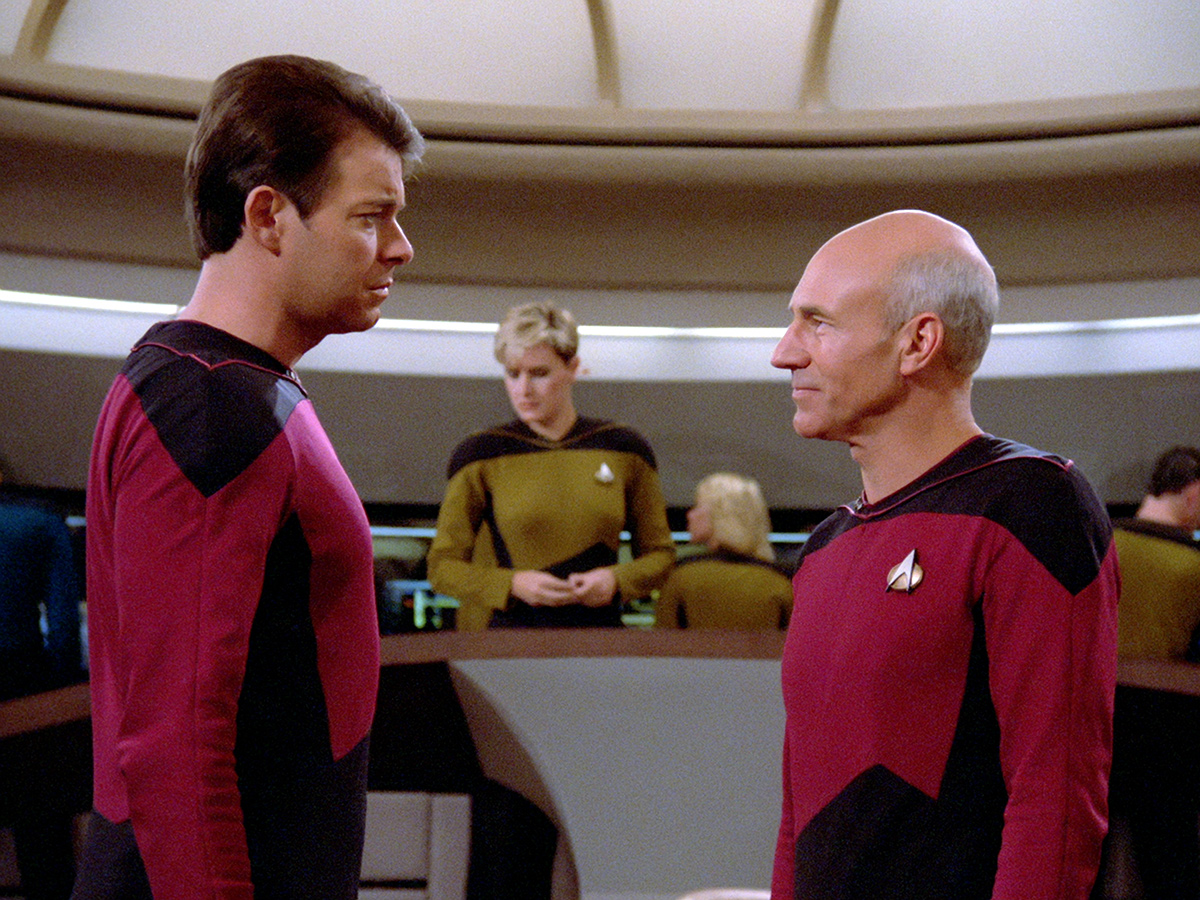
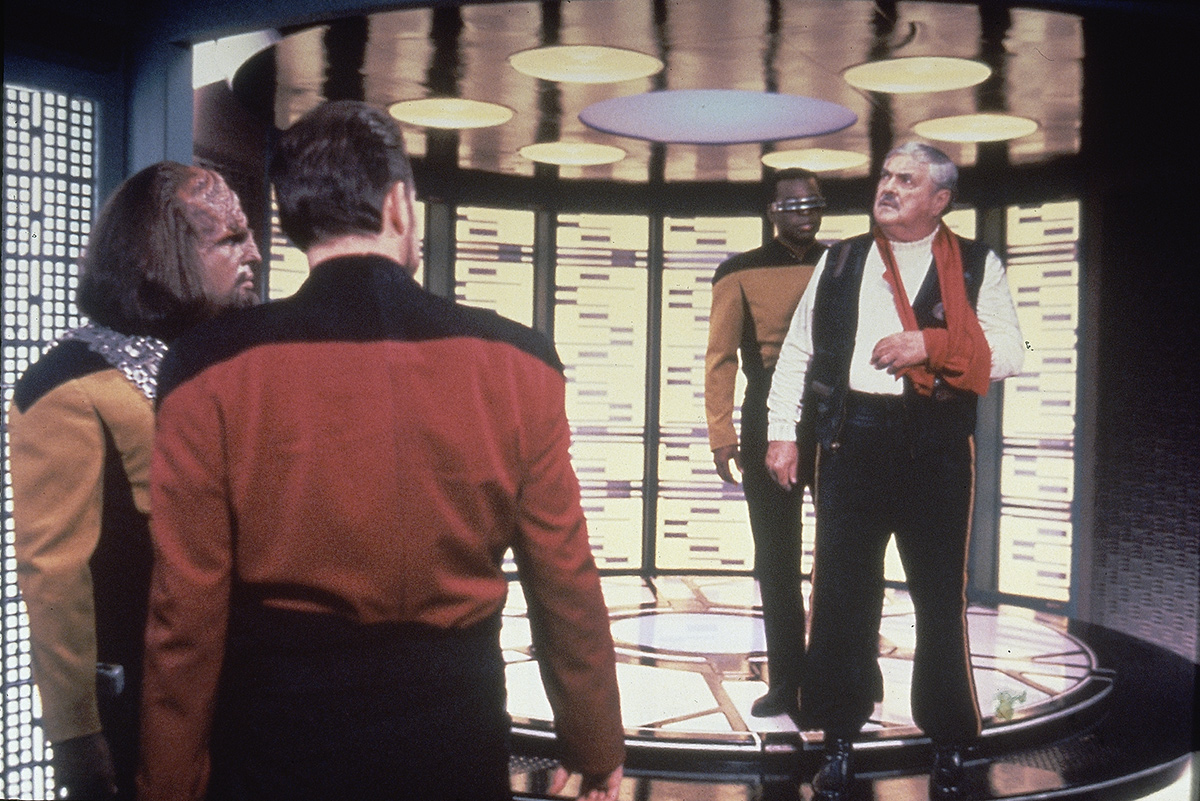
Next Generation was a pioneer for TV VFX, “and they were quite a challenge,” recalls Director of Photography Lowell Peterson, ASC, who operated on the series. “Many of the tricks we came up with, including the use of anamorphic lenses to create optical dolly shots, I still use today to do VFX shots that don’t require expensive roto-ing. Rob Legato [ASC] was on set a lot to help figure out how to achieve VFX without rotoscoping. Many times, it was designing a moving shot so that I could lock-off the Panahead at the moment the visual effect took place. If you look out for this, you can see it during the show.”
When directors wanted complex long takes, lock-offs had to accommodate multiple VFX moments in a single shot. For example, when two characters were coming out of a turbo lift on the main bridge, where the camera tracked-back in front of them until they stopped on the ramp, the camera was locked-off and they were transported out and an alien character transported in. The camera was unlocked, and it panned the alien 180 degrees across the bridge to the other ramp. Finally, the camera was locked-off again, as Worf fired his phaser at the alien and he disappeared.
“We had two working models to support this locked-off economy,” Legato explains. “First we would shoot the A-side with the blank set, then walk-on the appearing actors. This was all one take, as we would cue when the other actors in the scene, to ignore them walking and then would react to them appearing. The action would continue, and we would break the camera and pan, lock-off for the next section, and then do the same ritual in reverse. The stationary actors would react to their disappearance, keep rolling, and walk the disappearing actors off and get the clean plate. The camera effect would transport in and pan over, then they would transport out with the camera panning from one end of the set to the other.
“The other method was to shoot locked-off with an anamorphic lens – twice the width to allow us to pan over in post – and stage something similar but with the ability to pan and scan the frame, and have the camera move be able to pan in mid-effect, instead of waiting for the effect to be over before breaking the frame and panning. A poor man’s version of motion control,” Legato adds.
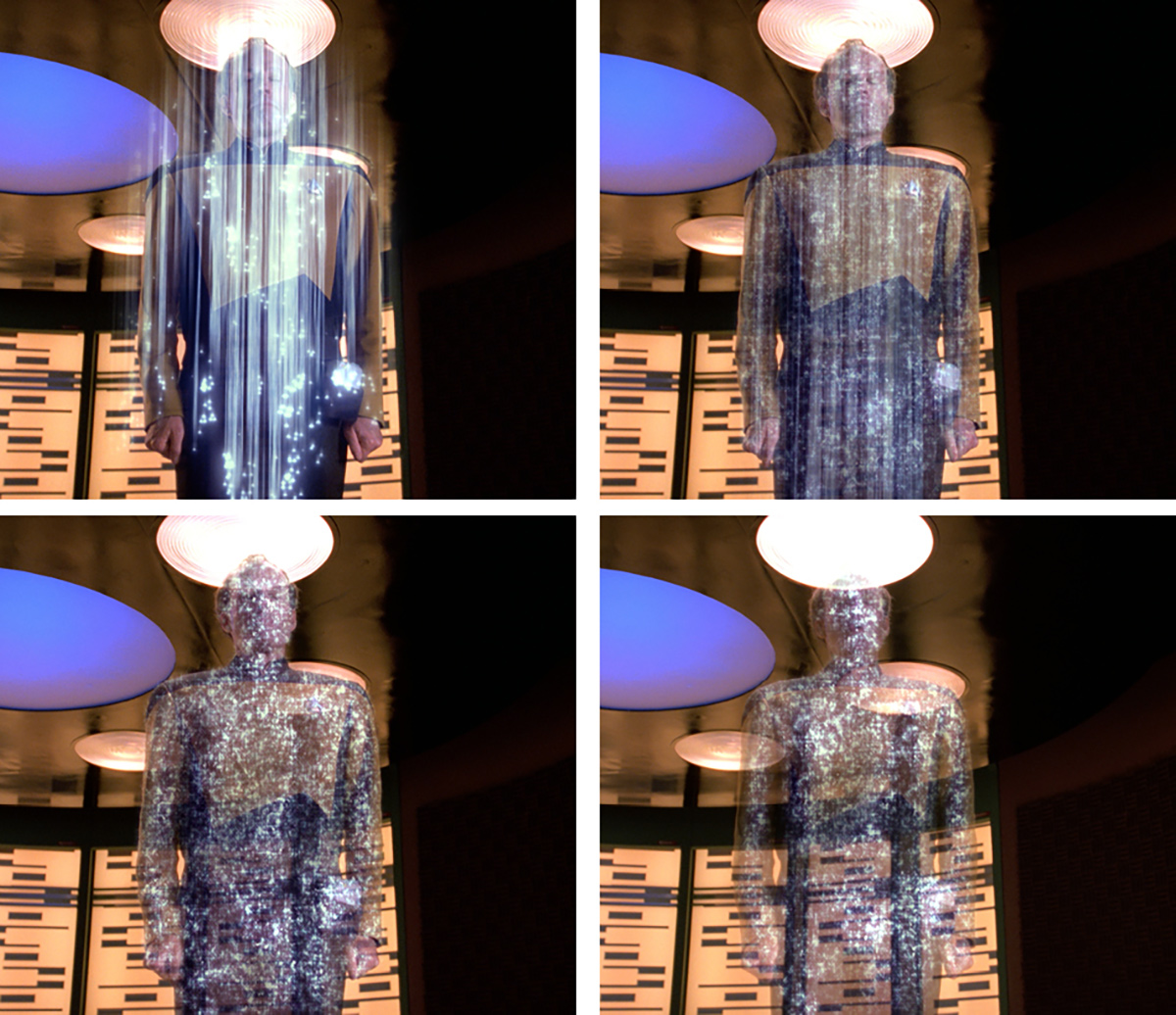
Star Trek: Deep Space Nine continued to up the stakes. The pilot ran around $18 million. The main set was two levels and expansive. The show was still shot on film – 35mm EXR 500T 5298 with Panavision cameras and lenses. But now the narrative moved away from the space station and was the first in the TV franchise to use CGI imagery for exterior space shots. The USS Defiant, for example, was the first starship to have a CGI model, although real “models” were still used for several episodes.
The pilot’s opening scene was a single shot, all handheld.
“It starts as the ship is in mid-destruction,” Chess describes, “and the captain is trying to free his dead wife from fallen debris, while his shell-shocked young son looks on. The camera is frantic as are the doomed crew. We run through the carnage as the ship is being torn apart and finally arrive at the last escape pod. Following the captain and his son inside, we see the terror in their faces and are slammed again. As they drop in their seats, the camera is vibrating and searching. Then the order is given to eject. The camera jerks with force and then falls dead calm as the pod breaks free from the dying hulk. As the pod shoots away into the quiet of space, the ship explodes in a fireball.”
The story moves to the bridge, where the series introduces the new (at the time) Enlouva crane and a Power Pod mounted on dolly and track. “We move from the pit circling around and up, to meet an alien crew member and the chief engineer,” Chess continues. “We follow them upstairs, through an arch, past a busy crew and again up and through some doors into the captain’s office, where we meet Captain Sisko. Again, one shot, and a small miracle given the tools of the day. The dolly track was built through a small hole in a wall of the elevated set, extending the arm’s travel 30 feet. The arm and bucket pivoted around the set wall time and again with precision.”
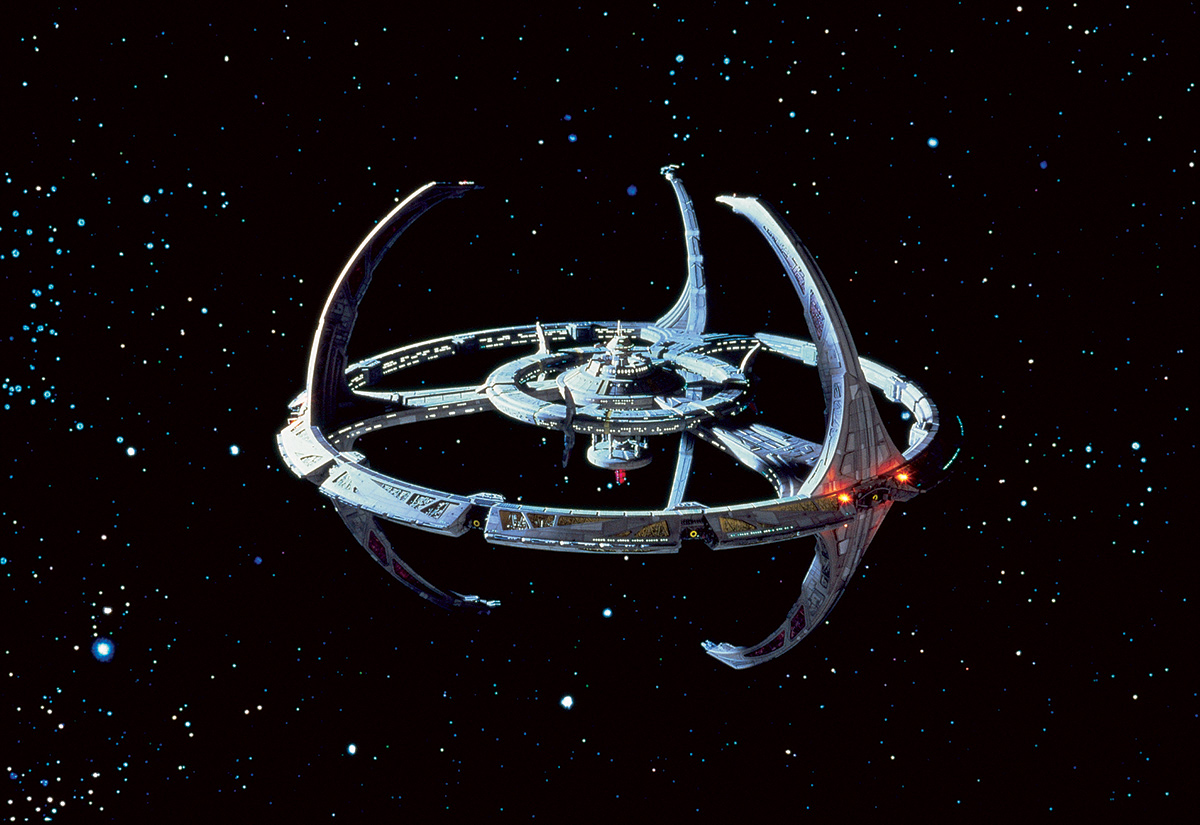
The franchise’s fourth installment, Star Trek: Voyager, which debuted in 1995, carried on the Panavision/EXR 500T 5298 tradition. Ramirez says the Local 600 team tested a couple of video cameras, “including a Sony, before starting the pilot, probably to aid in the VFX. But, in the end, we continued using Panavision film cameras and Mitchell filters to soften the make-up, as well as white Pro Mists on some episodes to differentiate between locations and the ship.”
Chess recalls a negotiation scene in which a fight breaks out.
“One alien is in a wall-sized fish bowl [green screen, CGI], one is a shapeshifter, [a man in a green suit], one only existed in CGI where we had to leave him open space [a tennis ball on a stick], and another in elaborate SFX make-up and suit completely with animatronics operated by two puppeteers – and then the weapons came out,” he explains. “Phaser blasts and CGI projectiles. There was also a green screen view-screen showing others involved in the negotiations. And it was all done handheld on a seven-day schedule!”
Six years later, in September 2001, Star Trek: Enterprise debuted. The show began shooting on Kodak Vision 500T 5279, with Panaflex Gold II and Panaflex Millennium XL cameras and Primo and Super Speed 2 lenses, as well as several Cooke lenses. However, by the fourth season, Rush tested Sony’s digital system, and production moved to the CineAlta and Zeiss DigiPrimes. Enterprise continued to “go where others haven’t gone.”
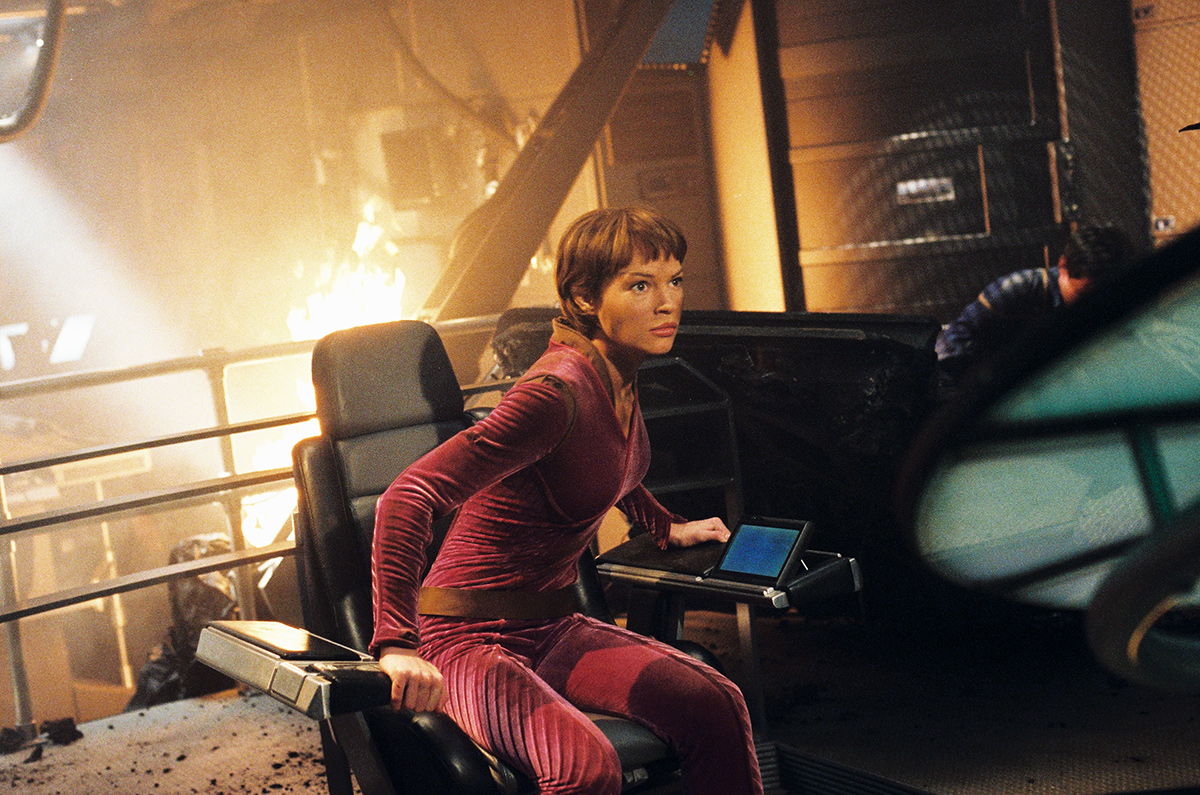
As Enterprise AC Mark Reilly notes: “We were one of the first TV shows to switch over from film to HD, and I may have been one of the first [AC’s] to pull focus using a monitor at Marvin’s cart. Up to that point, I normally worked at the camera with a Preston for flexibility, as we would regularly change camera configurations – going from handheld to crane. But the new Sony F900, and the improved video monitoring capabilities – Marvin used a 24-inch Apple monitor – compared to a video tap on film cameras, was a huge improvement. I would sit with my Preston on an apple box at Marvin’s monitor cart as he would say, ‘Follow the ball.’ He also liked the ability to tweak exposure or sneak in a zoom with a whisper. Of course, it took some getting used to, but I enjoyed pulling focus on a large screen and immediately knowing if we got the shot. The biggest challenge was learning the new camera menu and systems, and then adapting that for our many shooting modes.”
Enterprise Camera Operator Gary Tachell adds that other new gear was introduced on the show. “When the ship gets attacked and is ‘hit,’ the A-Camera operator/2nd Unit DP, Doug Knapp (SOC, who passed away in May 2020), shook the camera to simulate the hit,” Tachell shares. “A lot of the scenes on the bridge, where we were on a crane and a remote head, employed Marvin’s set of hot gears. With these tools, we were able to program a customizable shake and trigger it at the exact point of impact. We could even do a variety of motion-control capabilities with the gears.”
Tachell notes that Rush even “brought in a Sony FX1 prosumer to test as an Eyemo-type crash camera. “We had a scene where we were blowing up a shuttle pod, and we placed it in a crash-cam position, wide and close to the explosion,” he adds. “We were all pretty amazed at how well such an inexpensive camera could perform.”
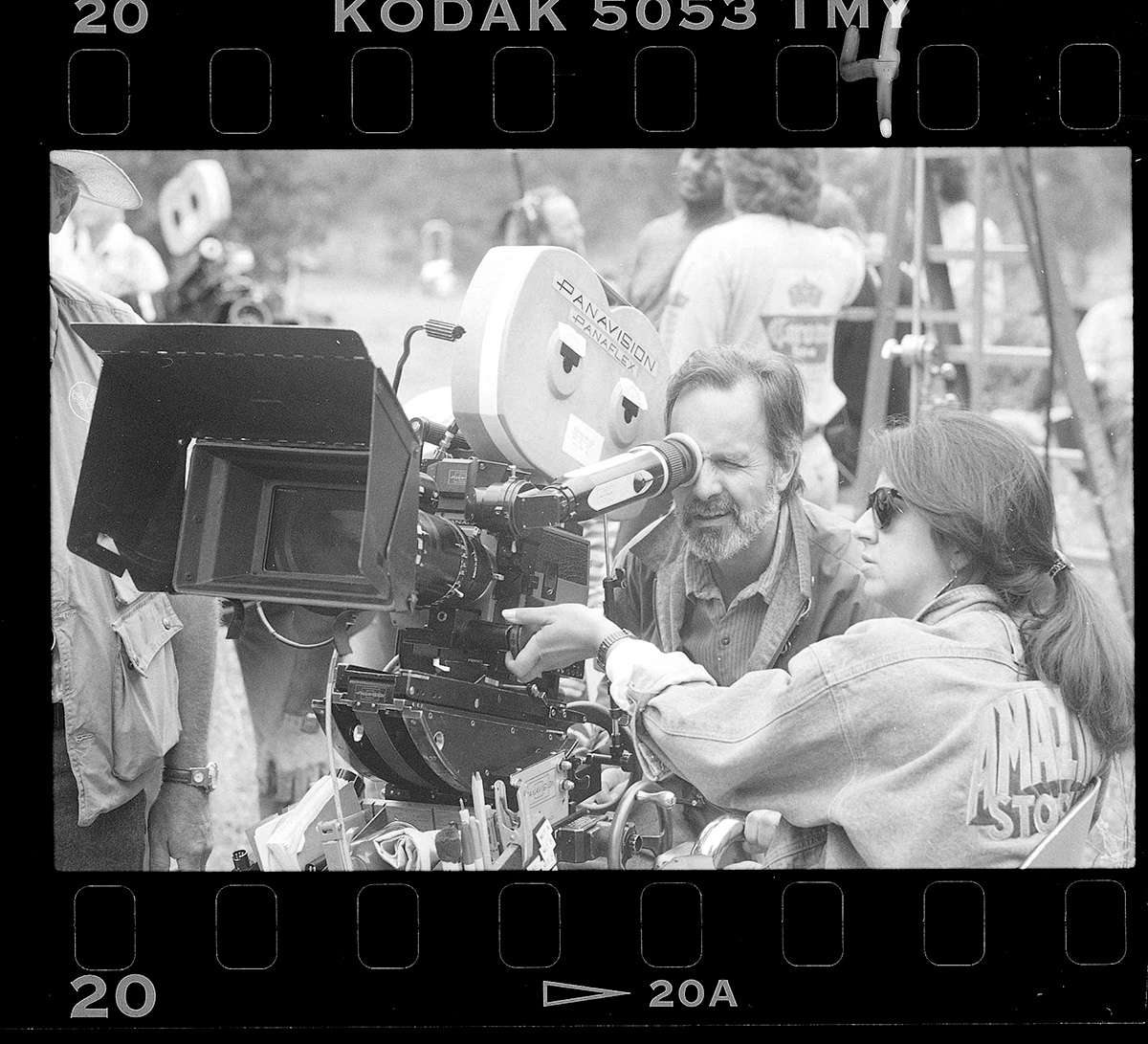
“Star Trek for me was always something special, something to be cherished and protected,” says Rush. “Most science fiction is dystopian in nature. Not Star Trek. Gene Roddenberry’s vision was more hopeful, more aspirational. It had integrity. My job as cinematographer was to keep this in mind when lighting and shooting. I wanted the light to come from honest sources and to maintain that source integrity as much as possible. Flashy and showy decisions were not chosen. Instead the story circumstances would always drive the look for both lighting and camera.
“I also felt it was my responsibility to promote people on a regular basis,” Rush adds. “My criterion was when I noticed that someone had reached a zenith in their current position then I needed to find a way to give them a bit of a shove forward. Sometimes they were reluctant at first. I explained it this way: ‘You can’t get any better in your current role because you are almost perfect. If I don’t promote you, then after a while you will get bored … then complacent … then finally bitter. Then we both will be unhappy.’ To counter their apprehension, I made a promise. ‘While you are learning the new job, I won’t ask you to do something you are not ready for. I will cover you until you are there!’ This was the best part of working for so many years on Star Trek. To watch my friends get to have their dreams as I have had mine.”
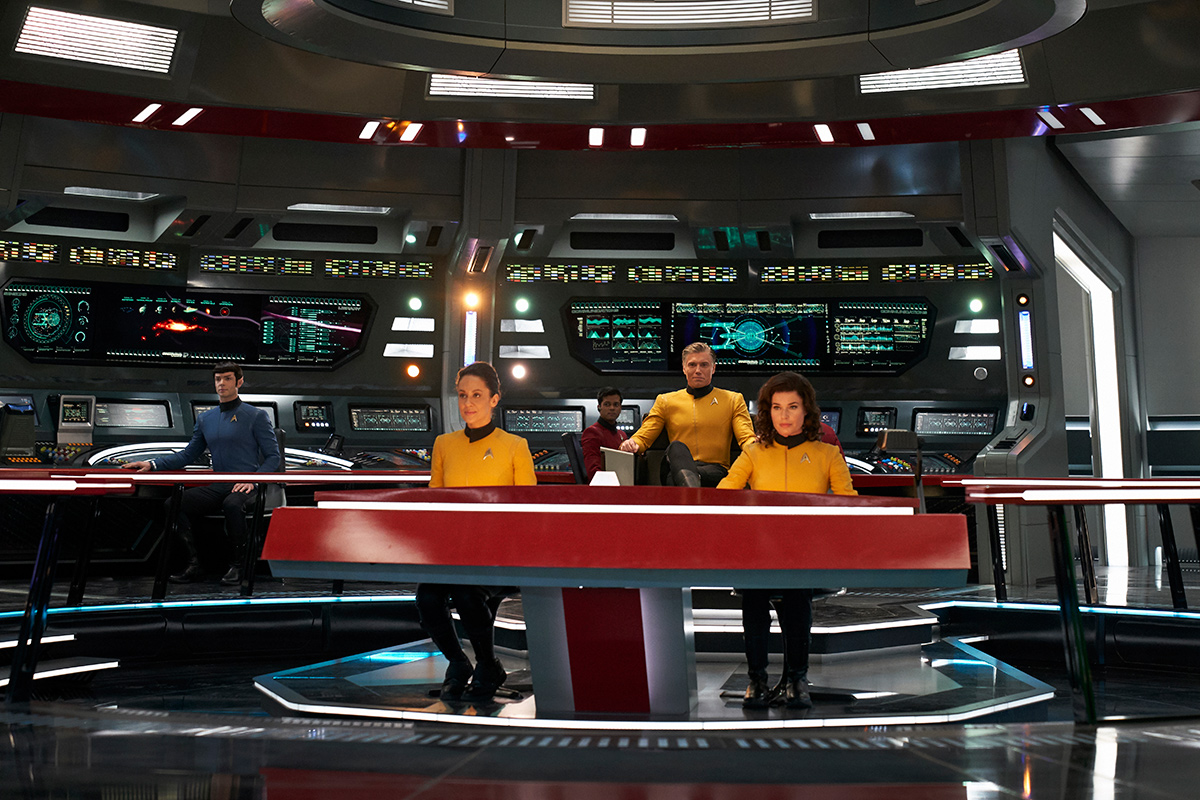
By 2017, and with the move to CBS All Access, the Star Trek TV franchise was fully digital. “We were challenged to shoot this new show, Discovery, as if it were a feature,” explains Director of Photography Glen Keenan, CSC. “Due to the advancement in technology and set construction, we had several new tools at our disposal. As an example, it took only 20 weeks to build the incredible Enterprise bridge. Since we have the sensitivity of the digital medium, we were able to use programmable LED lighting and dimmer-board technology to bring the bridge to life. Discovery used three dimmer-board operators, and I know it sounds unbelievable, but we had over two million LED lights throughout the set.”
Keenan adds that with the rise of small digital HD cameras, like the Blackmagic Pocket Cinema system, his team was able to mount the cameras on actors and within the sets for various scenes, which in turn connects the audience to the characters.
“And to aid our focus pullers, they can use tools like the Preston Light Ranger focus system to help them remotely pull focus on complicated sequences,” Keenan adds.
“Today, the shows can be even more engaging,” says Director of Photography Philip Lanyon, who has worked on Discovery and Star Trek: Picard, which debuted in early 2020. “Technological restrictions have traditionally been a huge help to story and often where we find the most creativity. Conversely, new tech can drive story and vice versa. I just find that it shouldn’t take the front seat. Sci-fi is more engaging when technology is used to support the story instead of letting spectacle for the sake of itself take the lead.
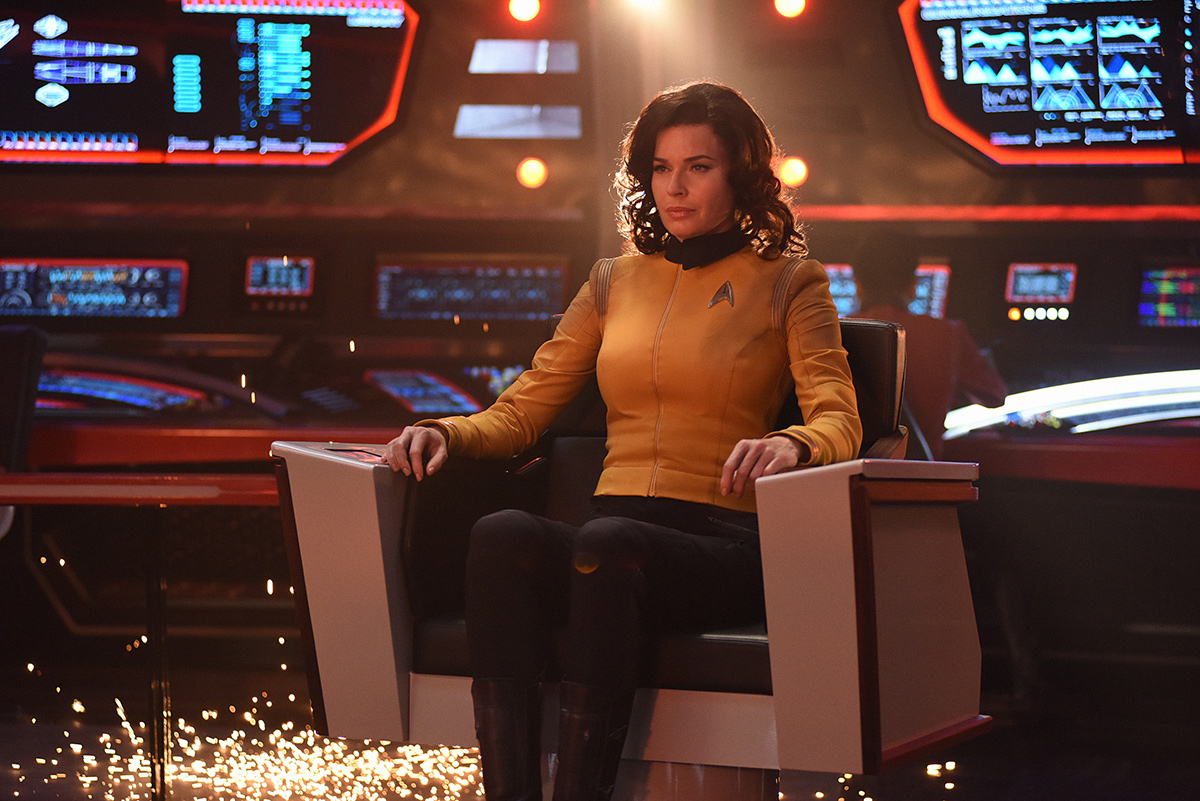
“For Picard, we use the ALEXA MINI paired with Cooke 2× Anamorphic Special Flare glass and a variety of LED and traditional sources,” Lanyon continues. “My favorites are the Kino 850 with a Chimera as a soft key and LiteGear’s LiteMat 4 as fill. For the ship, we use Area 48s, SkyPanels, and rainbow tubes. This gives us a ton of control over color and levels. On the Borg sets, we use 20K Mole projectors as Sun rays and a lot of LED strips within the cube itself.”
Lanyon says he’s amazed just how much Star Trek has grown through the years, all while adapting to the different technologies. “One of the things that have made the biggest difference for us is the use of VFX and CGI,” he describes. “The VFX magicians are so good at dealing with any problem, it allows directors and DP’s to focus on the story.”
Lanyon cites one creation on Picard that is of special interest. “It’s called the ‘warp core’ on the La Sirena spaceship,” he explains. “It’s an interactive part of the story and allows us to incorporate some beautiful lighting effects. Its creation can be attributed to a great collaboration between the art department and lighting. We use simple LED space lights for the design, and they work well in such a confined wall in front of a fire lane. We used the fire lane as extra depth as you can see through the fins of the space lights to the other side. We lit the back wall of the fire lane with Color Force strips and bounced it off silver pebble. It worked beautifully and became the centerpiece of the ship.”
Lanyon says the warp core outputs the equivalent of 35,000 watts, and with modern digital sensors, “we have such tremendous dynamic range and soft highlight roll-off, we could just keep going brighter and it kept looking better – more flare, beautifully wrapped backlight,” he concludes.
Befitting Rodenberry’s essential message of exploration in the service of humanity, installment eight in the TV franchise, Star Trek: Strange New Worlds, is next up for CBS All Access. Set in the years before Captain Kirk’s leadership of the USS Enterprise, with Christopher Pike (Anson Mount) in command, aided by Science Officer Spock (Ethan Peck) and Number One (Rebecca Romijn), the show promises to carry on Trek’s technological evolution. And given new tools like virtual sets, large-format cameras, and new lens design, Finnerman, Anderson, Dunn, Westheimer, and company, who invested years helping TV “go where no man has gone before,” would be proud.
